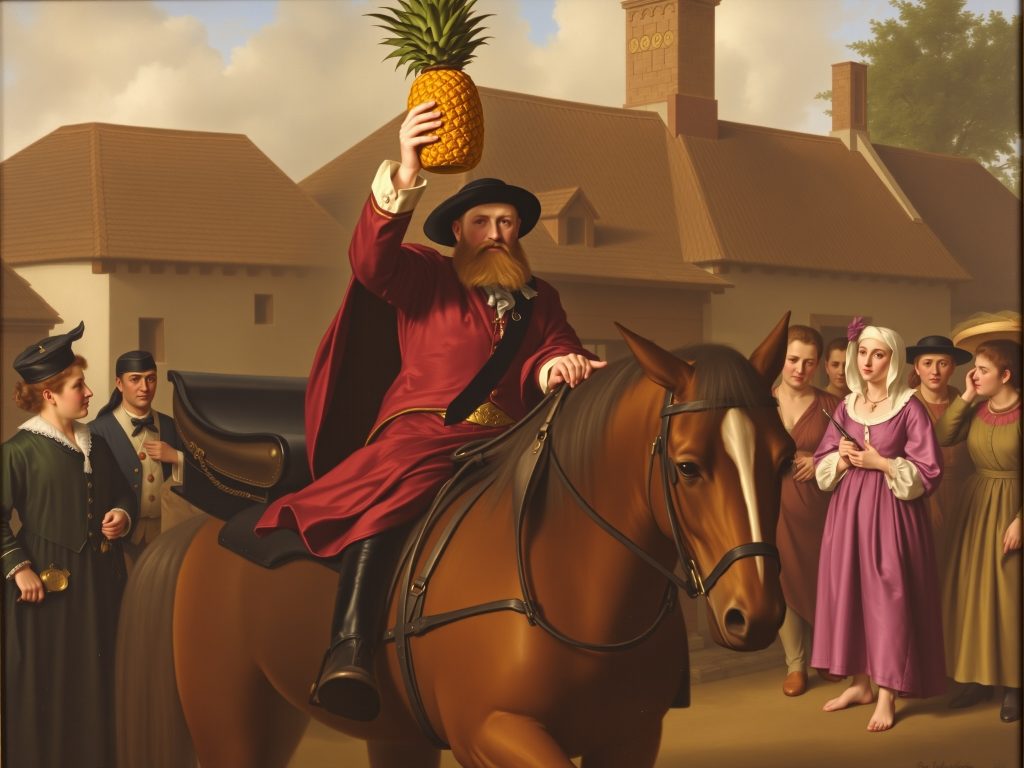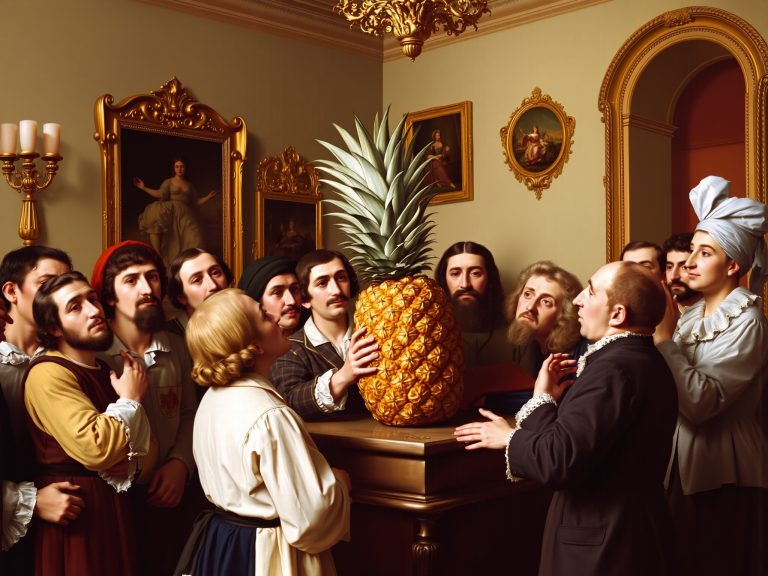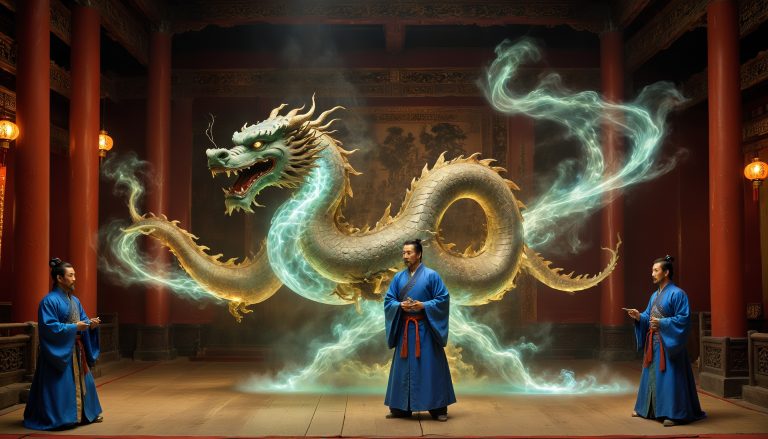In the annals of absurdity, few events rival the peculiar catastrophe that befell the quaint English town of Fotheringbridge in the summer of 1773. While the rest of Europe was embroiled in wars and revolutions, the quiet populace of this sleepy village found themselves on the brink of ruin… all because of a pineapple.
It began innocuously enough. Sir Reginald Pumphrey III, a minor nobleman with far more money than sense, returned from his Grand Tour of the West Indies with an exotic and most perplexing fruit: a pineapple. At the time, pineapples were the height of luxury, commanding prices that rivaled those of fine silverware or even small cottages. Sir Reginald, seeking to outdo his contemporaries in both taste and showmanship, placed the pineapple on display in the grand window of his manor.
News of this strange and spiky fruit spread like wildfire. The villagers, many of whom had never seen anything more exotic than a particularly large turnip, began to flock to Pumphrey Manor, jostling for a glimpse of the mysterious “prickly apple.” Local gossip soon took hold, with wildly exaggerated claims about the fruit’s properties. Some said it granted eternal youth; others whispered that it was cursed, brought back by dark sorcery from the Caribbean.
The situation reached its peak when Mrs. Edwina Potts, the town’s most notorious hypochondriac, claimed that she had contracted a fever merely from gazing too long at the pineapple. Panic ensued. A wave of hysteria rippled through the town as more villagers reported ailments ranging from minor headaches to outright hallucinations. The local apothecary, Charles Grimbly, seized the opportunity to sell “pineapple antidotes”—essentially water mixed with chalk dust—to the terrified masses. Soon, rumors circulated that the pineapple was spreading a tropical plague, and the townsfolk, in their frenzy, turned against Sir Reginald.
Matters came to a head when a mob, armed with pitchforks and, curiously, cabbages (the only thing they had on hand), descended on Pumphrey Manor, demanding the immediate destruction of the pineapple. Sir Reginald, having grown rather attached to the fruit, refused and instead barricaded himself inside, clutching the pineapple like a beloved pet. The standoff lasted for three days until, in a dramatic climax, the pineapple began to rot in the summer heat.
The stench was unbearable.
Realizing that the fruit was neither magical nor malevolent, the townsfolk gradually dispersed, embarrassed by their antics. Sir Reginald, however, emerged victorious, though his reputation never fully recovered. He would forever be known as “Reginald the Rotten” and spent his remaining years in relative seclusion, his prized pineapple reduced to a particularly pungent compost heap.
In hindsight, historians would come to call this bizarre event The Great Pineapple Panic of 1773, a cautionary tale of the dangers of exotic imports, unchecked imagination, and mass hysteria.
Actual knowledge about the theme
While the “Great Pineapple Panic of 1773” is fictional, there are several real historical events that share similar themes of mass hysteria, exotic imports causing panic, and financial crises. Here are some relevant examples:
Mass Hysteria Events
The Salem Witch Trials (1692-1693) are one of the most notorious cases of mass hysteria in American history. This event involved:
- Young girls experiencing unexplained fits and convulsions
- Accusations of witchcraft spreading rapidly through the community
- Trials resulting in the execution of 19 people and the death of 5 others in jail
Another example is the Dancing Plague of 1518 in Strasbourg, where hundreds of people danced uncontrollably for days or weeks. This bizarre event:
- Started with one woman dancing in the street
- Spread to over 400 people at its peak
- Resulted in some deaths due to exhaustion
Exotic Imports and Panic
While not exactly like the fictional pineapple story, there have been instances of unfamiliar items causing concern:The “War of the Worlds” radio broadcast in 1938 caused widespread panic when listeners believed the fictional Martian invasion was real. This demonstrates how the unfamiliar can trigger mass fear.
Financial Crises
The British credit crisis of 1772-1773 shares a similar timeframe to the fictional pineapple story and had significant economic impacts:
- It began with the collapse of a major London banking house
- Led to numerous bank failures and business bankruptcies
- Affected the American colonies, straining debtor-creditor relations
Conclusion
While the “Great Pineapple Panic” is fictional, real historical events have demonstrated similar themes of mass hysteria, fear of the unknown, and financial turmoil. These events highlight how easily misinformation can spread and the potential consequences of unchecked panic in communities.





